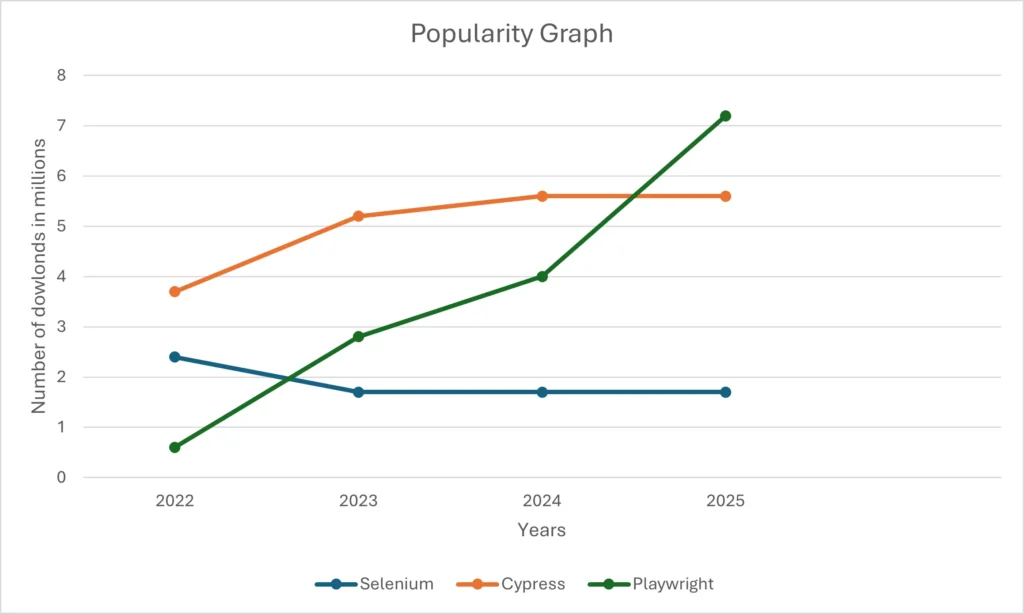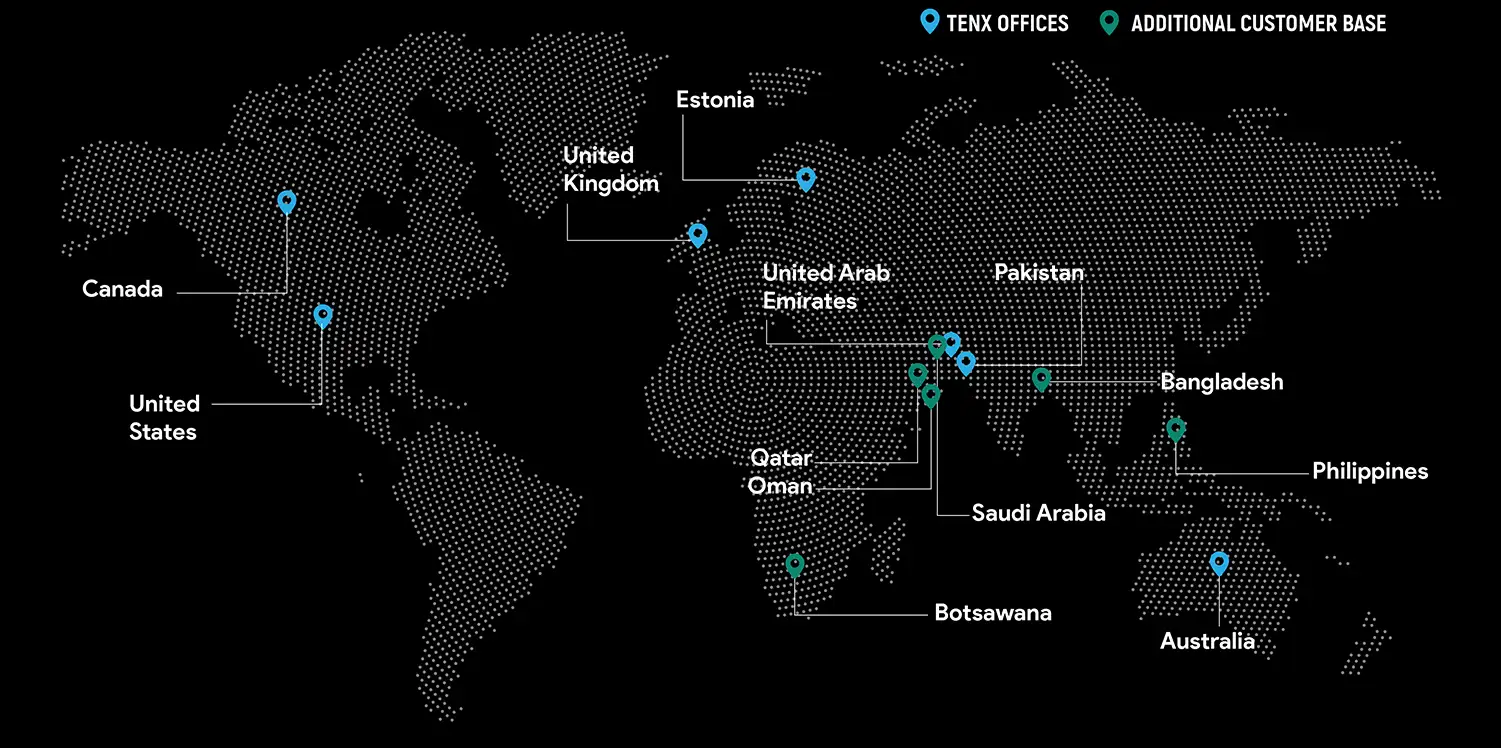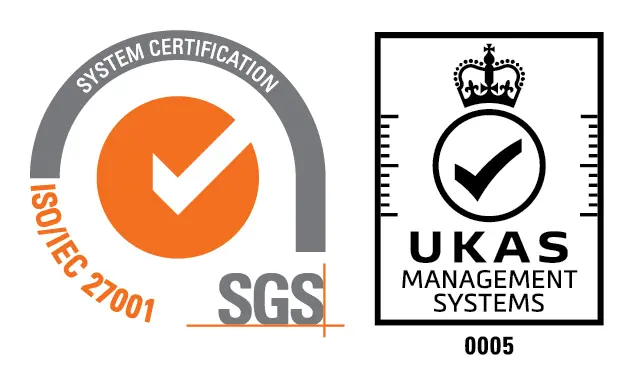September, 2025
Selenium vs Cypress vs Playwright: Which is Best?

- Muhammad Musa Khan
Introduction
Automated testing tools are essential for delivering high-quality software quickly. Among the top frameworks, Selenium, Cypress, and Playwright are notable standouts. This article compares these three test automation tools, highlighting their pros, cons, and best use cases.
What is Selenium? [Selenium WebDriver Explained]
Selenium is an open-source tool launched in 2004, developed by the Community, and is written in Java. Selenium WebDriver is the most widely used automation tool for automating web browsers. Selenium consists of four components, i.e., Selenium IDE, Selenium RC, Selenium WebDriver, and Selenium Grid. It works with various operating systems, including Windows, macOS, and Linux, as well as popular browsers such as Chrome, Firefox, Internet Explorer, and Safari. The programming languages C#, Java, JavaScript, Ruby, Python, and PHP are also supported by Selenium WebDriver.
Benefits of Selenium WebDriver:
- Open Source: Being an open-source web automation tool is one of Selenium WebDriver’s main benefits.
- Supports Multiple Browsers: It supports several browsers, including Firefox, Safari, Chrome, and Internet Explorer.
- Multi-Language Support: Language support is the primary obstacle that a tester or developer encounters with the automation tool. Selenium is easy to use because it supports all main languages, including JavaScript, Python, Java, Ruby, C#, Perl, .NET, and PHP.
- Supports Multiple OS: Selenium WebDriver supports multiple OS, i.e., Windows, Mac, Linux, Unix, etc, thus making it more flexible.
- Community Support: Selenium has one of the largest active open community support systems that can assist you in resolving any problems you may have.
Drawbacks of Selenium WebDriver:
- No Parallel Testing: Parallel Testing is not supported by the Selenium WebDriver. For parallel testing, you will have to use Selenium Grid.
- No Support for Desktop Applications: It cannot automate desktop applications.
- No Image-Based Testing: With Selenium WebDriver, it is not possible to perform tests on images. To perform image-based testing, Sikuli needs to be integrated with Selenium.
- No Built-In Reporting: It doesn’t have any built-in reporting mechanism. You will need to use external libraries for reporting, which are freely available.
- No Support for Api Testing: A tool named Rest Assured is used to automate tests on web services such as SOAP or REST.
What is Cypress? [Cypress Testing Framework Overview]
Cypress is a front-end automation tool designed for modern web development. As compared to Selenium WebDriver, Cypress is also an open-source tool. It was launched in 2007 by Cypress Community and is written in JavaScript. Unlike Selenium, which requires the installation of Selenium WebDriver, assertion libraries, drivers, and other libraries for reporting, among other tasks, this process can be challenging for testers. To avoid all these configuration hassles, Cypress, a new all-arounder, entered the market.
Cypress is ideal for projects that require rapid and reliable end-to-end testing of web applications. It is particularly well-liked for modern-day web applications made with JavaScript frameworks like Angular and React.
Benefits of Cypress:
- End-to-End Testing: The Cypress testing framework’s ability for end-to-end testing is one of its most appealing aspects as a web testing framework.
- Fast Execution: Tests run faster and are more trustworthy than those that use Selenium WebDriver, given that they run within the browser (in the same run loop as the app).
- Built-in Debugger: It provides real-time interactive debugging. Debugging is quick and easy, thanks to detailed errors and stack traces.
- Automatic Waiting: Cypress automatically waits for elements before proceeding. Therefore, there is no need to add manual wait() calls.
- Support Mobile Testing: Cypress supports emulated mobile app testing using a free open-source framework called the Ionic Framework.
- Supports Parallel Testing: Cypress provides built-in support for parallel testing. You don’t need to use any additional tools for parallel testing, unlike Selenium WebDriver.
- Instant Snapshots of Test Actions: Cypress takes snapshots of your tests. Hover over the Command Log commands to see what happened in each step.
Drawbacks of Cypress:
- Limited Browser Support: Cypress has a limited range of browser support, supporting only a handful of web browsers, specifically those in the Chrome family, including Chrome, Edge, and Firefox.
- Restricted to Single Browser Context: Cypress does not allow using different tabs or windows of a browser.
- Limited Iframe Support: Cypress provides minimal support for iframes.
- No Multi-Language Support: There is no multi-language support. Cypress only supports JavaScript. Therefore, a thorough understanding of JavaScript is necessary to write tests in Cypress.
- Paid Cypress Dashboard: Some of the advanced capabilities, such as flake detection, knowing the historical test results, and parallelization insights, can only be available with the premium Cypress Dashboard service.
What is Playwright? [Playwright Automation Testing]
Playwright is an open-source automation testing tool released in 2020 by Microsoft, written in TypeScript. It is one of the most popular automation tools used for cross-browser and cross-platform testing. It enables developers and testers to automate web applications across multiple devices and browsers using a single standardized API. It supports various web browsers and numerous programming languages, giving it an upper hand against Cypress. Other than that, like Selenium WebDriver, it also supports multiple OS.
Playwright is designed to test modern web applications in the same way a real user would, by clicking, typing, navigating, and manipulating the interface in the same manner as a person would use it. Playwright also has advanced features, including multi-tab support, network emulation, and mobile emulation.
Benefits of Playwright:
- Multiple Browsers Support: Like Selenium WebDriver, Playwright automation tool also supports various browsers such as Chrome, MS Edge, Firefox, and Safari. Other than that, the tests can also be executed on desktop and mobile (including the emulated devices).
- Multi-Language Support: Playwright automation tool supports JavaScript, TypeScript, Java, Python, .NET, and C#, just as Selenium WebDriver.
- Fast Execution: Execution of scripts is more rapid than both Selenium WebDriver and Cypress.
- Supports Multiple Browser Contexts: Playwright automation tool provides support for multi-tab and multi-page use cases. You can test multiple sessions in parallel using a single test run.
- Supports Parallelism and Isolation: Playwright will always isolate a browser test environment, and it will execute each test separately. Like Cypress, Playwright also offers built-in support for parallel testing.
- Supports API Testing: It is helpful for full-stack test scenarios as it can execute HTTP requests directly.
- Automatic Waiting: Playwright automation tool also supports automatic waiting, which helps reduce flakiness to an extent.
Drawbacks of Playwright:
- Small Community: The Playwright has a much smaller community than both Selenium WebDriver and Cypress.
- Lack of API Testing: Playwright automation tool supports API testing, but it has some limitations, such as not supporting the disabling of follow redirects in its API Request function.
- Runs Mobile Tests in Emulated Mode: The Playwright automation tool supports testing for desktop and mobile applications. But it doesn’t support actual mobile devices. Playwright uses desktop browsers to simulate mobile devices, rather than real devices.
- Flaky on Some CI Environments: It is stable in most cases, but some users report flakiness in headless CI execution.
- No Composite Video for Test Groups: One test() function records screenshots, videos, and error traces. If there are multiple tests, you will receive videos and traces for each test separately, but not for the root test function.
Popularity:
Let’s examine npm’s popularity and download statistics. Check the following chart:

Insights:
- By the beginning of 2025, Playwright was quickly gaining more weekly downloads than Cypress due to its rapid growth.
- Even though its growth has decelerated compared to Playwright, Cypress has enough followers and remains steady with downloads.
- The number of weekly downloads has declined for Selenium WebDriver despite its continued popularity, which indicates that more modern testing frameworks are replacing it.
Selenium vs Cypress vs Playwright: Key Differences:
|
Feature / Criteria |
Selenium |
Cypress |
Playwright |
|
Created By |
Selenium Project Community |
Cypress.io |
Microsoft |
|
Open Source |
✅ Yes |
✅ Yes |
✅ Yes |
|
Language Support |
Java, Python, JavaScript, C#, Ruby, etc. |
JavaScript, TypeScript |
JavaScript, TypeScript, Python, Java, .NET |
|
Browser Support |
Chrome, Firefox, Edge, Safari, IE |
Chrome, Edge, Firefox (WebKit limited) |
Chrome, Firefox, Safari (via WebKit) |
|
Mobile Testing |
Real devices (via Appium) |
❌ Emulated only |
✅ Android (experimental) / Emulated iOS |
|
Multi-Tab / Multi-Window Support |
✅ Yes |
❌ No |
✅ Yes |
|
Iframe Handling |
✅ Yes (with effort) |
⚠️ Limited |
✅ Strong |
|
Real-Time Debugging Tools |
🛠️ Dev tools + Logs |
✅ Time-travel & Command Log |
✅ Trace viewer, Inspector |
|
Parallel Execution |
✅ With Grid or cloud providers |
✅ With Cypress Dashboard (paid) |
✅ Built-in |
|
Test Isolation |
Manual setup needed |
✅ Built-in |
✅ Built-in (browser contexts) |
|
Network Interception / Mocking |
⚠️ Possible, but complex |
✅ Easy with cy.intercept() |
✅ Powerful with page.route() |
|
Test Runner Included |
❌ No (external needed, e.g., JUnit) |
✅ Yes |
✅ Yes (Playwright Test) |
|
CI/CD Integration |
✅ Widely supported |
✅ Easy integration |
✅ Easy integration |
|
Headless Mode |
✅ Yes |
✅ Yes |
✅ Yes |
|
Screenshots & Video Capture |
✅ With config or plugins |
✅ Built-in |
✅ Built-in |
|
Best For |
Wide compatibility, enterprise setups |
Fast UI testing, frontend developers |
Cross-browser E2E testing, flexibility |
Table 1 Comparison of Selenium vs Cypress vs Playwright automation testing tools
How to Choose the Best Test Automation Tool for Your Project
Previously, I have compared the most popular automation tools and discussed the advantages and disadvantages of their approach. Now, the crucial question of selecting the correct automation tool for your project arises. It is a critical/difficult decision that depends on various factors such as your team’s experience, your project’s needs, and the set of technologies utilized. The following guidelines should be considered when selecting the most suitable automation tool.
- Project Requirement and Scope: You should have a clear understanding of what you are looking to automate, i.e., Regression Tests, UI Tests, API Tests, etc.
- Know Your Team Skillset: Consider your team’s skillset, i.e., their level of familiarity with the tools and programming languages. This will help you minimize the training cost and speed up the process.
- Technology Stack: You must ensure that the automation tool you are selecting is compatible with the technology being used in your project (e.g., Flutter, React, .NET, mobile apps, web apps).
- Community Support and Documentation: Tools with active communities, frequent updates, and detailed documentation are simpler to diagnose and maintain.
- Multi-Platform and Multi-Browser Support: If your application requires cross-product testing or needs to be cross-platform, then you should consider a tool that supports multiple browsers and platforms.
- Test Reusability: Frameworks that support reusable components, page objects, and BDD (such as Cucumber) make test maintenance easy as the app grows.
- Support for Parallel Execution: If your tests need to be executed in parallel and you are seeking faster execution, then you should consider a tool that supports parallel execution.
- Reporting & Debugging: Good tools have inbuilt or ready-to-be-integrated reporting facilities that can assist in the evaluation of failure and coverage of tests.
- License & Cost: Consider a tool that is open source; in the long term, this will reduce the expense of the project. Weigh the ROI based on your project’s size and timeline.
Key Takeaway:
When comparing Selenium, Cypress, and Playwright, there’s no single best tool. The right choice depends on project requirements, language support, and test automation goals. The good thing is that here at TenX, we are using all three tools (Selenium, Cypress, and Playwright) based on the project’s needs.

Muhammad Musa Khan
Musa Khan works as a SQA Analyst at TenX
Global Presence
TenX drives innovation with AI consulting, blending data analytics, software engineering, and cloud services.
Ready to discuss your project?





